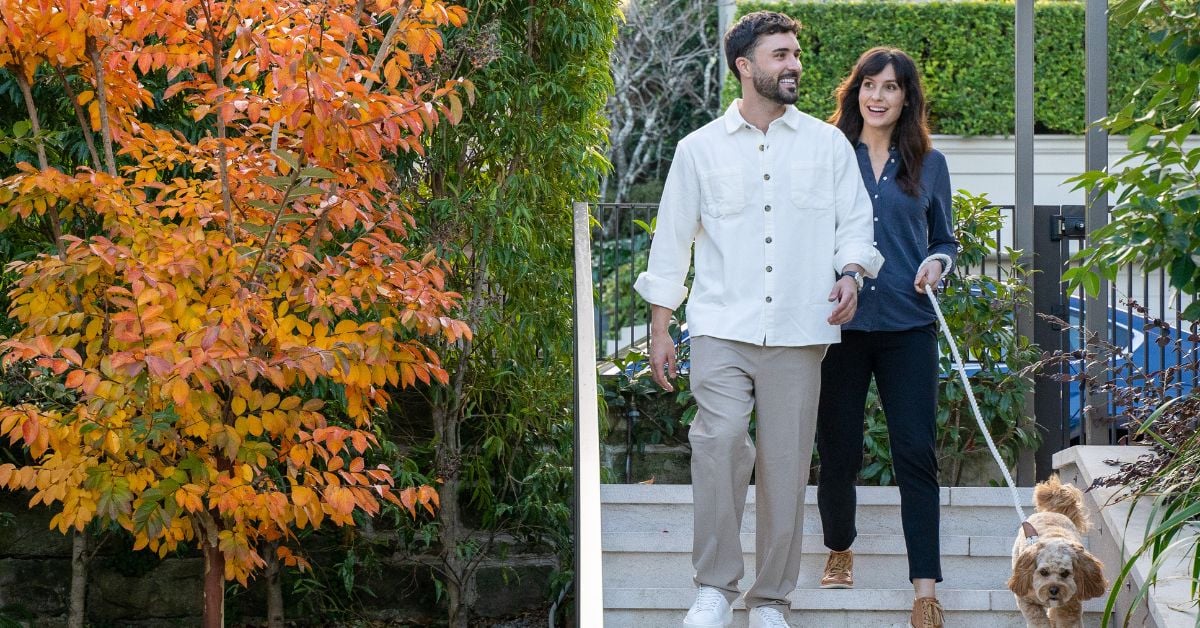Green Home Certifications: What They Mean for Property Value

It’s not just renovated kitchens or swimming pools that are winning over potential home buyers, if you are looking to sell and want to make an impression think about installing solar panels, LED lighting and proper insulation.
Improving the sustainability of your home is not only good for the planet, but may also increase its value. Eco-features such as double-glazed windows, greywater recycling systems and smart technology are redefining what makes a ‘dream home’ as house hunters look to combat rising utility bills and reduce their cost of living.
Many people are also becoming increasingly passionate about reducing their carbon footprint and conserving energy to protect the environment.
A green home certification is a great way to let potential buyers know the additional benefits of your property. Let’s take a look at what it entails.
Advantages of going green
The latest Domain Sustainability in Property Report (2024) reveals that eco-friendly homes in Australia sell faster and at a premium. Green homes can fetch $112,000 more than their non-energy-efficient counterparts, while units can sell for $70,000 more. The data also showed that these properties tend to attract more views online. In some states, such as Adelaide and Melbourne, it was as high as 52 per cent and 34 per cent respectively.
Are green assessments mandatory?
In Australia, only vendors in the ACT are required to obtain and disclose the Energy Efficiency Rating (EER) of their property when selling.
It must be included in the contract of sale and is similar to the star system seen on white goods. EER assessments for new builds must be carried out by accredited energy assessors. This evaluation is then included in the sales documentation and advertising materials.
Established homes are given a score ranging from 0 to 6 stars, based on factors like insulation, window performance, and the orientation of the home. New dwellings are given a score from 0 to 8.
Agent Jane Macken, owner of LJ Hooker Woden | Weston, said it is not uncommon for buyers to turn down an inspection if the property only has one star or under.
“There are even some properties with zero stars if they have no insulation in the roof, are not oriented correctly or without double glazing,” she said.
Mrs Macken recently sold ‘Earth House’ an eco-friendly home built into the side of a hill in the Goobarragandra Valley, just outside of Tumut in NSW. The iconic property, which was featured on the television show ‘Grand Designs’ won over buyers with its impressive list of sustainability features, which was supported by documentation.
It can cost sellers $20,000 to retrofit their existing home with a range of features to improve their rating such as window awnings and new roof batts.
“Retro-fitting increases the interest of buyers, I won’t say that you will get all of the money back but buyers have less to complain about and will be more confident to bid at auction,” according to Mrs Macken.
How do I get my home assessed for a Green Home Certification?
A Green Home Certification formally recognises features such as energy consumption, water use, building materials and environmental impact. It shows that the property meets specific environmental and energy efficiency standards.
An accredited energy assessor looks at key areas such as heating, cooling, lighting, hot water systems and insulation. Following the evaluation, homeowners receive a detailed report with tailored recommendations for boosting energy efficiency.
What kind of assessments are available?
Both the Nationwide House Energy Rating Scheme (also known as NatHERS) and the Residential Efficiency Scorecard (also known as Scorecard) are Australian initiatives aimed at improving home energy efficiency. These focus on different aspects of the home depending on its age providing distinct types of assessments.
Scorecard
The Residential Efficiency Scorecard is a national government backed program that offers a star rating of existing homes. Accredited assessors provide a snapshot of your home’s overall energy performance and comfort, as well as provide advice on how to make improvements. They will conduct an in-person inspection looking at the fabric of the building and fixed appliances. These typically start in price from around $300 for a one-bedroom dwelling up to $430 for a five-bedroom home.
NatHERS
New homes or those undergoing major renovation are assessed under the NatHERS which aims to provide a standardised approach to measuring thermal performance.
It analyses design, including layout, orientation, insulation, window glazing and construction materials. It aims to reduce the need for artificial heating and cooling. It can also provide a guide on the best appliances to include within an energy-efficient home and provide an energy performance when looking to sell in the future.
BASIX
Any new residential developments or renovations in NSW need to comply with BASIX requirements. It uses an online interface to evaluate the expected performance of a home based on its design, water fixtures, energy systems, and materials used.
Green Star Homes
New residential homes can also be certified by the Green Building Council of Australia under the Green Star Home Standard. These properties must meet standards and be designed to reduce greenhouse gas emissions, improve indoor air quality and reduce environmental impact during construction. There are several companies accredited to provide such assessments using the approved framework.
Upcoming changes for green certification
The Australian Government has recognised a need to provide standardised energy performance assessments for all properties. They are collaborating with State and Territory Governments to expand the Nationwide House Energy Rating System (NatHERS) to include existing homes from mid-2025.
Why is an energy rating system so important?
The ratings are considered essential in Australia's journey towards low-carbon emissions, playing a pivotal role in supporting the country's sustainability goals. The system will enable homeowners to gain a clearer understanding of power consumption, pinpoint affordable upgrades, and help cut utility bills. Likewise, homebuyers will be able to factor in eco-friendly features in their decision when purchasing property.
Own your green home sooner
Banks and financial institutions will use these ratings to verify green loans, offering them greater confidence when lending money for home improvements, particularly those that enhance energy efficiency.
Some banks are already rewarding eco-conscious mortgage holders with a lower Standard Variable Rate when building, buying or renovating a home to be more climate resilient or sustainable.
Small changes can go a long way to making your home more environmentally friendly, and that brings benefits when it comes to selling. Consider adding solar panels or even a compost or vegetable garden. Look for products and designs that will count towards reducing your carbon footprint. Your local LJ Hooker will be able to provide insight and tips into what type of green features could make your home more appealing.
Curious about what your home is worth?
DISCLAIMER - The information provided is for guidance and informational purposes only and does not replace independent business, legal and financial advice which we strongly recommend. Whilst the information is considered true and correct at the date of publication, changes in circumstances after the time of publication may impact the accuracy of the information provided. LJ Hooker will not accept responsibility or liability for any reliance on the blog information, including but not limited to, the accuracy, currency or completeness of any information or links.
Share



.jpg)